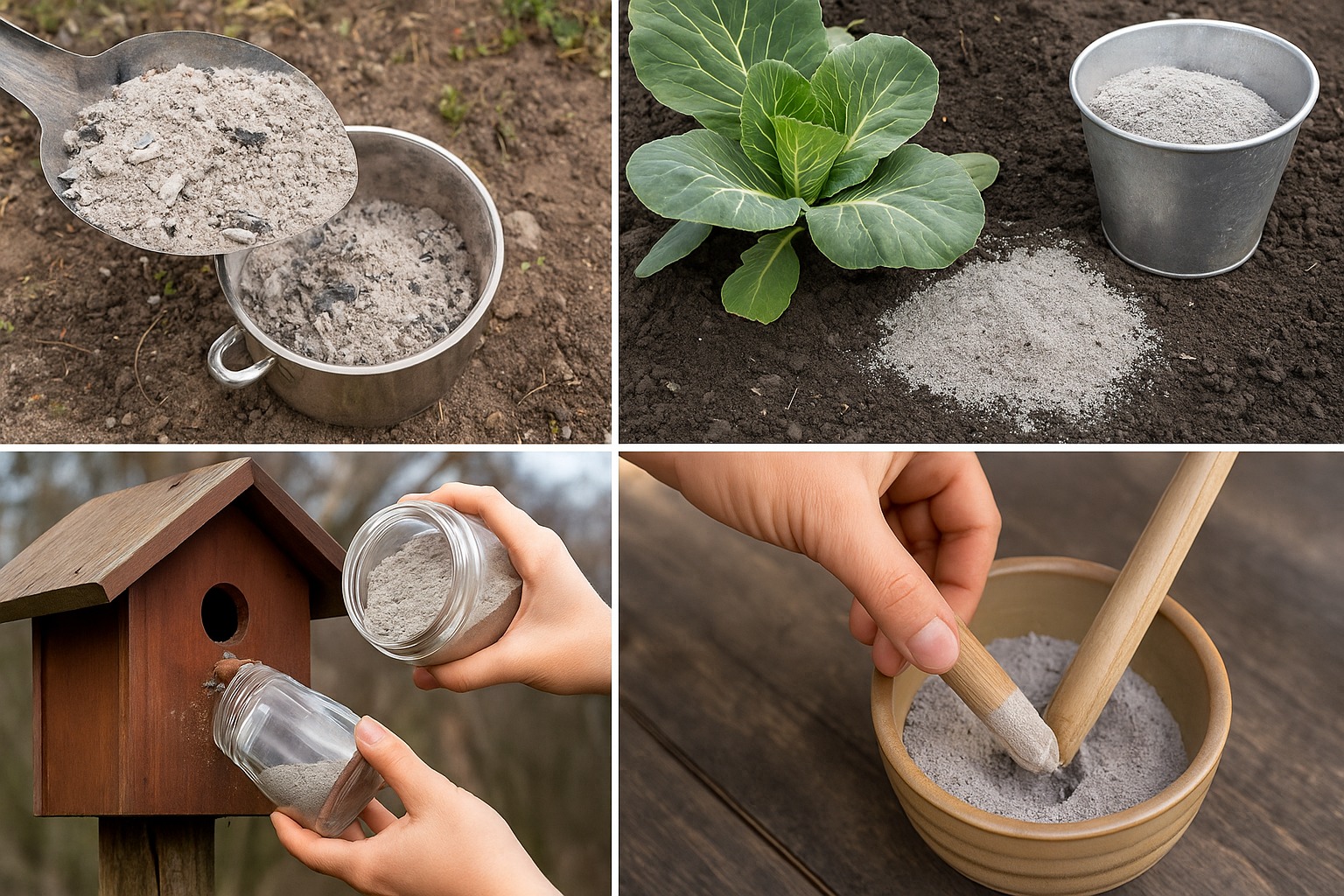If you’ve ever cleaned out a fireplace, wood stove, or garden fire pit, chances are you’ve scooped up a bucket of gray, powdery ash and tossed it away without a second thought. But that seemingly useless pile? It’s actually packed with potential. Wood ash, especially from natural, untreated wood, is a surprisingly versatile and eco-friendly resource that can replace store-bought products and enrich your garden at the same time.
Here are 7 smart, sustainable, and chemical-free ways to reuse wood ash—and why you’ll never look at it as waste again.
🌿 What Is Wood Ash, and Why Should You Care?
Wood ash is the mineral-rich residue left behind after burning wood. It contains essential elements such as:
- Calcium carbonate (a natural liming agent)
- Potassium (potash)
- Phosphorus
- Magnesium
- Silica
These minerals make it a powerful natural cleaner, fertilizer, and pest repellent. Just make sure you’re using ash from clean, untreated wood—no painted planks, chemically treated lumber, or coal ash, which can contain harmful toxins.
✅ Safe-to-Use Ashes:
- Natural hardwood logs
- Wood pellets without additives
- Plant trimmings, dead leaves
❌ Avoid Using Ash From:
- Pressure-treated wood or painted boards
- Charcoal briquettes or coal
- MDF, plywood, or composite materials
Pro Tip: Always let ash cool completely before handling, and sift out any nails, chunks, or debris before use.
♻️ 1. DIY Laundry Detergent
Forget chemical-laden commercial detergents—wood ash can naturally clean your clothes thanks to its high potash content, a natural soap-like compound. When mixed with water, potash creates lye, which has been used for centuries in soap making.
How to make it:
- Mix one part sifted wood ash with three parts warm water.
- Let it sit for 24–48 hours.
- Strain the liquid through a cloth.
- Use ½ to 1 cup of this liquid per load of laundry.
It works best on organic stains and is gentle on fabrics. Bonus: it’s biodegradable and safe for septic systems.
🪟 2. Streak-Free Window Cleaner
Ash’s mild abrasiveness and degreasing abilities make it a fantastic alternative to chemical window sprays. It cuts through grime, water spots, and fingerprints with ease.
How to use it:
- Dampen a soft cloth.
- Dip it into fine wood ash.
- Scrub your windows gently.
- Wipe clean with a damp towel, then dry.
You’ll be surprised how sparkly and streak-free your glass becomes—no vinegar or ammonia required.
🍽️ 3. Natural Degreaser and Scrubber
Need to clean stubborn grime on pots, pans, or your stovetop? Wood ash acts like a gentle scouring powder. It lifts grease and stains without scratching most surfaces.
How to apply:
- Mix ash with a bit of water to make a paste.
- Use a sponge or rag to scrub dishes, sink fixtures, or greasy surfaces.
- Rinse thoroughly.
This works especially well on stainless steel and cast iron—no need for harsh chemicals.
🥄 4. Polish Silver and Brass
Over time, silverware and brass items can tarnish and lose their shine. Wood ash can bring back their luster without commercial polishes.
To use:
- Dampen a soft cloth.
- Dip into wood ash.
- Rub gently over silver or brass.
- Buff and rinse for a natural shine.
It’s a simple, zero-waste solution to restore old cutlery or antique decor pieces.
❄️ 5. Use as a De-Icer in Winter
Forget expensive salt that can corrode concrete and harm pets’ paws. Wood ash is an effective, low-impact way to melt ice and improve traction.
Where to use it:
- Sprinkle over icy sidewalks, driveways, or outdoor stairs.
- Reapply as needed.
It won’t melt thick layers of ice instantly, but it provides traction and slowly breaks down frost without environmental damage.
🌱 6. Fertilize Your Garden
Wood ash is a garden goldmine—rich in potassium, calcium, and other trace minerals that support healthy plant growth. It also helps neutralize acidic soils, making it especially helpful in vegetable patches and orchards.
How to apply:
- Lightly sprinkle ash over soil before watering.
- Mix into compost piles to balance acidity.
- Add around fruit trees, tomato plants, or root vegetables.
Warning: Avoid using it near acid-loving plants like blueberries, azaleas, or rhododendrons.
🐌 7. Natural Pest Repellent
Got slugs or snails invading your garden? Wood ash’s fine texture and drying properties make it a natural barrier.
How to use:
- Create a ring of ash around plants or beds.
- Reapply after rain or watering.
It dries out soft-bodied pests on contact, deterring them without harming pollinators or pets.
💡 Extra Tips for Ash Storage and Use
- Keep ash dry: Moisture can cause the nutrients to leach out.
- Store in a metal container: Prevent accidental fire hazards.
- Sift ash before using to remove large debris.
- Use sparingly: Too much ash can alter soil pH or become messy indoors.
🌍 Final Thoughts: Waste Not, Want Not
Next time you clean out your fireplace or stove, resist the urge to toss the ash. With just a few simple tweaks, that byproduct becomes a natural, non-toxic, and zero-waste solution for cleaning, gardening, and more.
You’ll save money, reduce household chemical use, and support sustainable living—all with a resource that most people throw away.
📝 Summary: 7 Smart Uses for Wood Ash
| Use | How It Helps |
|---|---|
| Laundry detergent | Natural stain remover, replaces chemical soap |
| Window cleaner | Degreases glass and leaves it sparkling |
| Degreaser & scrubber | Tackles kitchen grime and stains naturally |
| Metal polish | Restores silver and brass shine |
| De-icer | Safer than salt for winter walkways |
| Fertilizer | Enriches garden soil with minerals |
| Pest repellent | Keeps slugs and snails away |
So next time you gather ash from your fireplace, don’t bin it—use it. Your home, your garden, and the planet will thank you.

